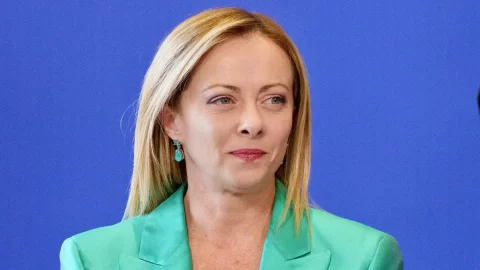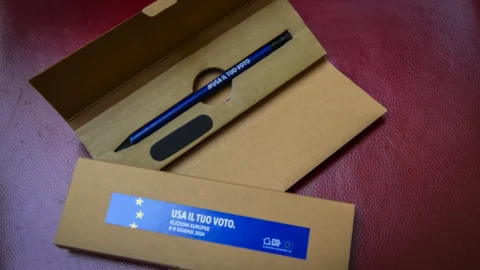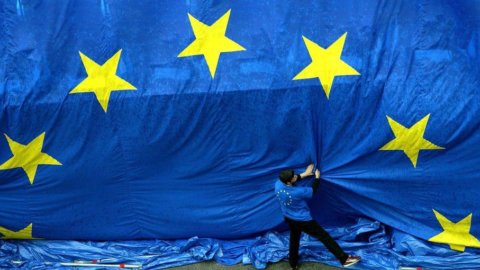Brussels loosens the shirts of the state aid, at least for the strategic sectors of the green transition. After a long debate with member countries, a first response from the EU to the US Inflation Reduction Act arrives. There European Commission published, on Thursday 9 March, a loosening extraordinary implementation of the state aid rules, which will remain in force until the end of 2025. The objective of the EU executive - which also provides for the so-called matching clause (requested by France and Germany) – should allow member states to counter competition from China and the United States, albeit with some reservations.
"The framework we have adopted today offers Member States the possibility to grant state aid quickly, clearly and predictably - explained the European Commissioner in charge of overseeing competition policy Margrethe Vestager -. Our rules will allow member countries to accelerate zero-emission investments, while protecting free access to the single market as well as cohesion objectives. The new rules are proportionate, targeted and temporary”.
The European response to Biden's wrath
The easing of state aid rules is just one of three measures implemented by Europe in response to theInflation Reduction Act (Ira) Usa, i.e. Biden's 369 billion dollar maxi-plan which provides for billion-dollar subsidies for "clean" technologies produced in the United States, and which is coveted by large European groups. On the other hand, the alarm has been sounding in Europe for some time: it was sounded by national governments, European commissioners and obviously the entire industrial world. Many have made it clear that in the face of Biden's maxi-plan, EU countries run a "strong risk of deindustrialization", with the consequence of losing billions of investments in the coming years. This includes, for example, the case of the German giant Volkswagen which suspended the construction of a gigafactory for the production of batteries in Europe, enticed by US subsidies (it could receive up to 10 billion dollars if it moved the plant to North America). Also the battery manufacturer Northvolt it may prefer the US to Germany to build its next gigafactory.
The next appointments of the Commission
However, the most delicate part of the plan remains that relating to the creation of new common economic instruments to finance the industrial plan for Green Deal. The Commission will present the Net-Zero Industry Act (which concerns the manufacturing industry) and the Critical Raw Material Act (on the other hand it concerns the supply of raw materials). While the reform of the electricity market is the third on the calendar, scheduled for Thursday 16 March.
Von der Leyen in the US for free trade agreement
Returning to the easing of restrictions on state subsidies, the picture arrived just as von der Leyen was overseas to meet US President Joe Biden. The priority for the leader of the Brussels executive is to convince the head of the White House to grant the EU the same exemptions from IRA enjoyed by Canada and Mexico, as they have a free trade agreement with Washington. But let's see in detail the new temporary regime for state aid adopted by the Commission, called Temporary Crisis and Transition Framework.
How the Temporary Crisis and Transition Framework works
European state aid rules had already been relaxed due to the pandemic and the Russian invasion of Ukraine and the ensuing energy crisis. Now the Temporary Crisis Framework, which allows Member States to more easily inject public money into companies in difficulty, has been partly extended and modified, giving life to the new Temporary Crisis and Transition Framework. In a nutshell, national governments are allowed to financially support the development processes related to the production of renewable energy and to the conservation of energy, as well as those aimed at converting industry currently powered to fossil fuels.
Some investments support will be possible until the end of 2025: those concerning "strategic equipment" such as solar panels, wind turbines, heat pumps and carbon dioxide absorption systems. Easier incentives also in all those production processes related to production and recycling of the critical raw materials, such as lithium and rare earths, materials of strategic economic importance for which Europe is heavily dependent on other countries.
And it doesn't end there. In some "exceptional cases", states the document, member countries "will be able to provide higher support to individual companies, if there is a real risk that investments will be diverted outside Europe". In such situations, Member States will be able to provide “the amount of support that the beneficiary could receive for an equivalent investment in an alternative location”. Or, the text continues, they will be able to assign "the amount necessary to encourage the company to make the investment in Europe, whichever is the lower". This is the so-called matching clause, which should allow a country to retain on its territory establishments of companies that might be considering relocation. And here comes the case of VW.
The actual impact of this measure will be assessed by the 27 member states in the coming weeks, but not everyone likes loosening the rules on state aid and it remains a dangerous path for the EU. The risk, in fact, is that the new regulations may favor countries with stronger balance sheets (and therefore more able to distribute subsidies), opening the door to cases of unfair competition precisely within the Union.
Who doesn't like the new state aid rules
The measure obviously appeals to countries that have stronger budgets and therefore wider margins of intervention with public spending (such as Germany, France). In fact, France and Germany alone invested 77% of the total state aid (672 billion) approved under the previous regime of special rules, the Temporary Crisis Framework. On the other hand, the Member States who find themselves with a highly limited fiscal space of action by the high debt, Italy first of all, they would have greater difficulties in benefiting from an easing of restrictions on state aid. Another deleterious consequence would be the "race for subsidies" within the EU: a danger already feared in a letter to the Commission by six countries: Finland, Denmark, Ireland, Villages Low, Sweden e Poland.
The balances therefore remain delicate: on the one hand the need to counter American and Chinese competition and on the other the need to guarantee free competition between the 27, avoiding creating new fractures on the European internal market which could end up hindering, rather than favoring, the same green transition.
EU agreement: cut in final energy consumption by 11,7% in 2030
Meanwhile, an agreement arrives from the EU onenergy efficiency. Sweden (which holds the EU's rotating presidency) and European Parliament negotiators have reached an interim political agreement to collectively reduce the final energy consumption by 11,7% by 2030 (compared to forecasts made in 2020). Member States will benefit from the flexibility to achieve this target, while the consumption limit for final consumption will be binding. In particular, Member States will ensure new annual savings of 1,49% of final energy consumption on average during this period, gradually reaching 1,9% on 31 December 2030. Not only that: Member States are obliged to renew at least 3% of the total area of public buildings each year.
Il new regulation however, it could find some obstacles in its adoption process, as demonstrated by the case of the stop to petrol and diesel engines for cars from 2035, a decision taken by Europe, which continues to be postponed due to the veto of some countries (Italy and Germany first).





